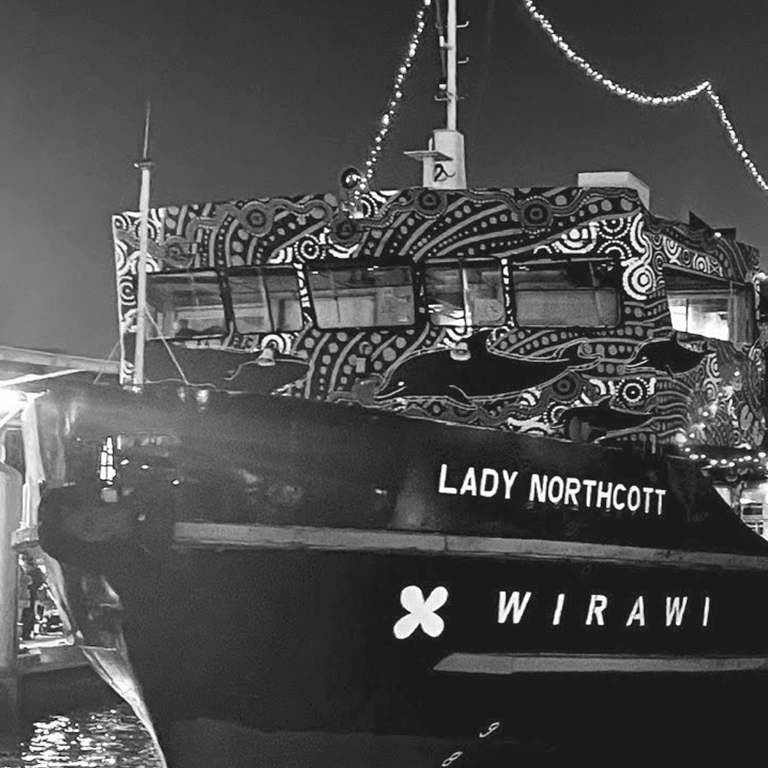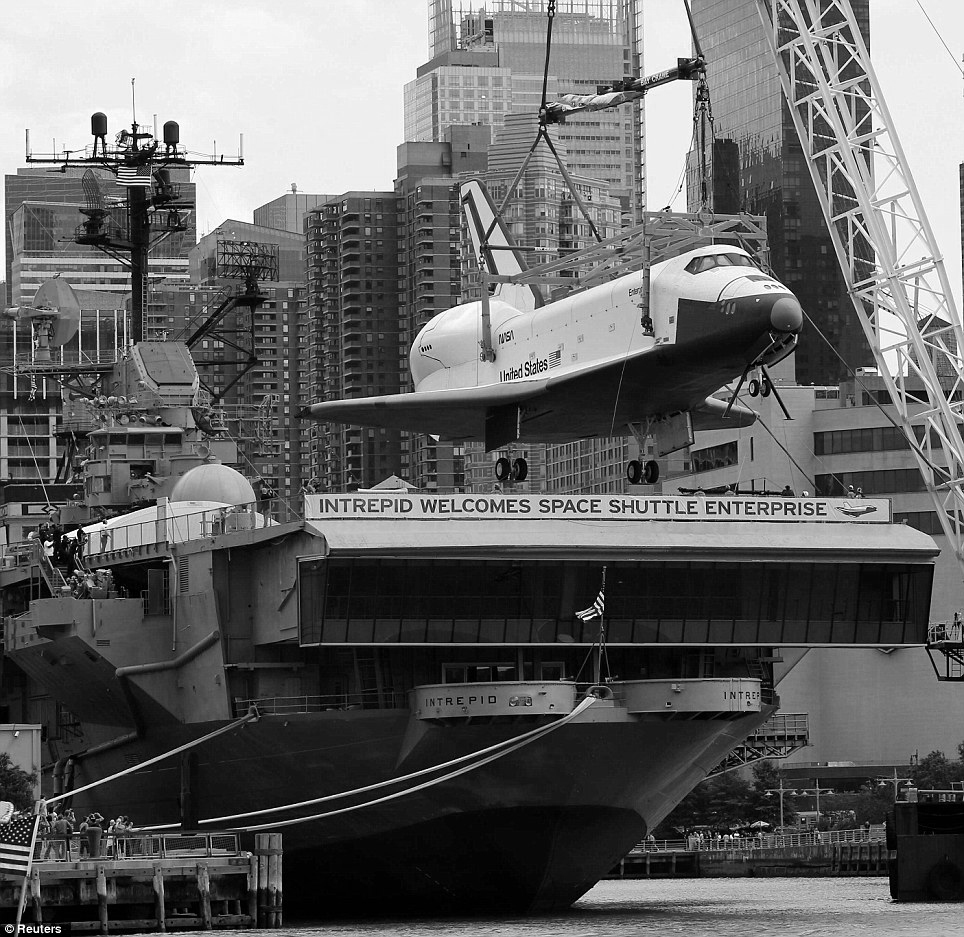New Spaces
We propose to convert MV Collaroy into a series of spaces for collaboration, fabrication, and study. These spaces would include studios for creatives, a workshop and fab lab, a cafe-bar, a library, and an auditorium capable of hosting exhibitions, forums, film screenings, and dance, theatre, and music performances.
An icon of Sydney Harbour, we would ensure that the vessel’s aluminium superstructure, steel hull, historic livery, and external fittings were maintained.
Image: A cross-section of the transformed ferry
We propose to convert MV Collaroy into a series of spaces for collaboration, fabrication, and study. These spaces would include studios for creatives, a workshop and fab lab, a cafe-bar, a library, and an auditorium capable of hosting exhibitions, forums, film screenings, and dance, theatre, and music performances.
An icon of Sydney Harbour, we would ensure that the vessel’s aluminium superstructure, steel hull, historic livery, and external fittings were maintained.
Image: A cross-section of the transformed ferry


New Audiences
The spaces of the transformed ship would be available for creatives, academics, local community groups, and K-12 and university students. The entire volume of the ship would also be open to the general public through regular exhibitions and performances.
The spaces of the transformed ship would be available for creatives, academics, local community groups, and K-12 and university students. The entire volume of the ship would also be open to the general public through regular exhibitions and performances.

Old uses alongside new programs

Learning space on the main deck
 A view of the aft space, configured for a performance
A view of the aft space, configured for a performance
The Working Ship
On the main deck, we propose a series of spaces dedicated to industrial and digital fabrication, production, and learning, including a fully equipped fab lab and traditional workshops. The ship’s rope lockers and crew quarters would be transformed into smaller, more private studios, for either individual study or tutorials. The ship’s extensive external seating, so important for simply sitting and watching the view, would be preserved.
Upstairs, the forward half of the upper deck would be occupied by a generous cafe-bar, with an open, working kitchen in the centre ringed by tables and chairs that also spill out onto the forward terrace.
On the main deck, we propose a series of spaces dedicated to industrial and digital fabrication, production, and learning, including a fully equipped fab lab and traditional workshops. The ship’s rope lockers and crew quarters would be transformed into smaller, more private studios, for either individual study or tutorials. The ship’s extensive external seating, so important for simply sitting and watching the view, would be preserved.
Upstairs, the forward half of the upper deck would be occupied by a generous cafe-bar, with an open, working kitchen in the centre ringed by tables and chairs that also spill out onto the forward terrace.
At the other end, the aft half of the upper deck would feature our proposal’s most significant structural change: the cutting out of the aluminum decking to create a double-height space ringed by a mezzanine.
When configured for major public exhibitions, this space could host major sculptures and installations. When configured for dance, theatre, or stage performances, this same double-height void could be fitted with demountable raked seating to host an audience. Existing access to the engine room beneath the aft central stairs would allow belowdecks to function as ample backstage areas.
When configured for major public exhibitions, this space could host major sculptures and installations. When configured for dance, theatre, or stage performances, this same double-height void could be fitted with demountable raked seating to host an audience. Existing access to the engine room beneath the aft central stairs would allow belowdecks to function as ample backstage areas.
 A fab lab and maker space on the main deck
A fab lab and maker space on the main deck
The ship configured as a floating cinema
 Sydney Opera House, Sydney
Sydney Opera House, SydneyOutcomes
Our proposal would:
- Establish a new, highly adaptable cultural venue that contributes to the wider creative ecosystem of Sydney
- Preserve and maintain an iconic vessel with maritime heritage value
-
Generate new jobs and apprenticeships in the maritimes trades, which draw on and celebrate the extensive knowledge of Sydney ferry crews and skippers
- Generate new jobs and opportunities in the creative industries
-
Encourage alternative ways of being on the water that privilege historically marginalised voices and knowledge of the harbour.
- Catalyse new uses of harbourside architecture, such as wharves, slipways, and quaysides
- Connect to and learn from existing cultural venues on the foreshore
- Provide a unique learning space, well-suited to environmental, architectural, and maritime research
- Result in a low carbon, zero-waste vessel
Precedents
The history of ships is the history of imaginative re-use. Just by Tower Bridge in London floats Grand Cru, a 110-year-old Dutch barge converted into a recording studio by The Who’s Pete Townshend. The US Navy’s USNS Comfort, which is deployed around the world, was an oil tanker before being transformed into a state-of-the-art, floating medical facility. The Australian National Maritime Museum maintains a lightship, a submarine, and other craft as museum ships, allowing multiple generations to critically engage with the city’s maritime history.
The double lives of ships have long made them sites of research, debate, and production, such as SS Patris II, the location of the immensely influential fourth International Congress of Architecture (CIAM) in 1933, or Denmark’s Galathea expedition in 2006, which focused on climate change and marine biology. Out of this tradition, purpose-built research vessels, such as the unique RV Heraclitus, have emerged. While in Sydney, Tribal Warrior has repurposed former Sydney ferry Lady Northcott as part of their mission of celebrating Indigenous knowledge.
On land, adaptive re-use has proven well suited for major cultural venues, from Tate Modern, to Amsterdam’s NDSM, to the Brisbane Powerhouse, as well as for projects run explicitly for the benefit of the local community. Since 1976, the Addison Road Community Organisation in Marrickville has supported artists, led environmental programs and fought for social justice on 9 acres of former army depot. Since 2012, Pioneer Works, an artist-run cultural center in New York City, has provided studios, labs, a press, and run free public programs in a former ironworks. In London, hosted and subsidised by Somerset House, Makerversity provides spaces, machines and tools for professional makers, as well learning programs for young people with an explicit focus on increasing diversity within the creative industries.
Whether on water or land, careful stewardship has given these sites a second life — just as important as the first. We believe Collaroy should be no different.






We acknowledge the Gadi and Gayamay peoples, the Traditional Custodians of the lands between which the Freshwater ferries have historically sailed. We recognise their continuing connection to land and water, the sovereignty of which was never ceded.